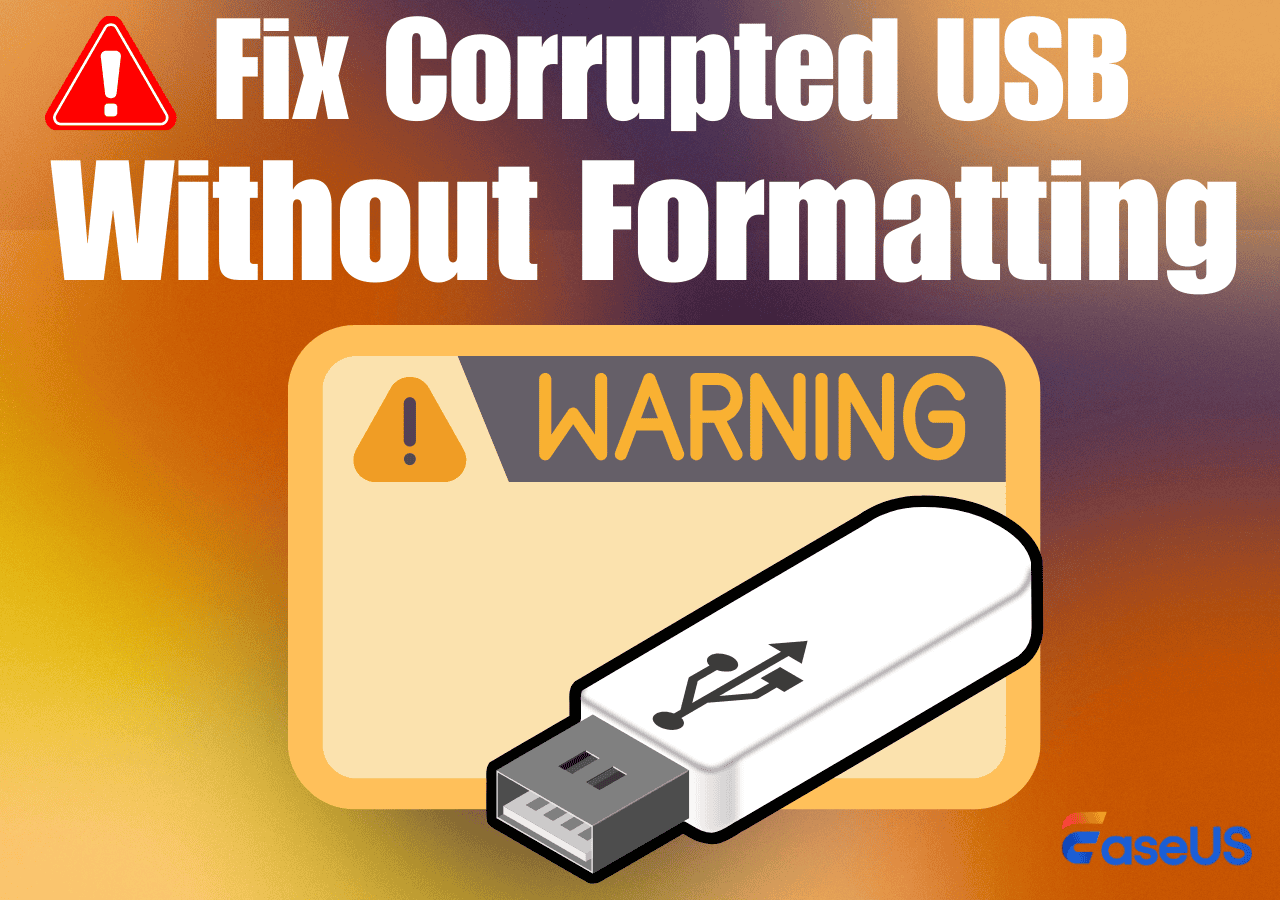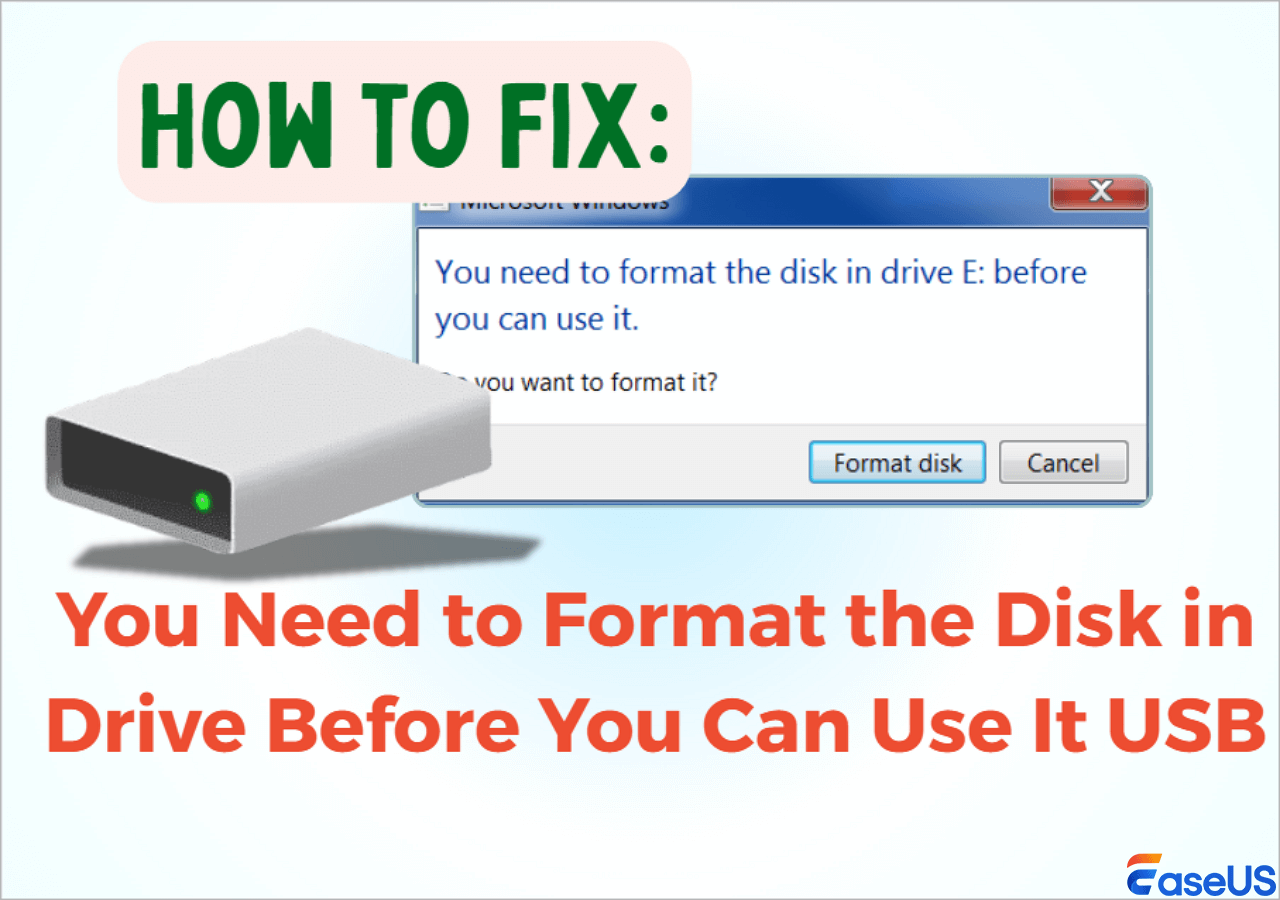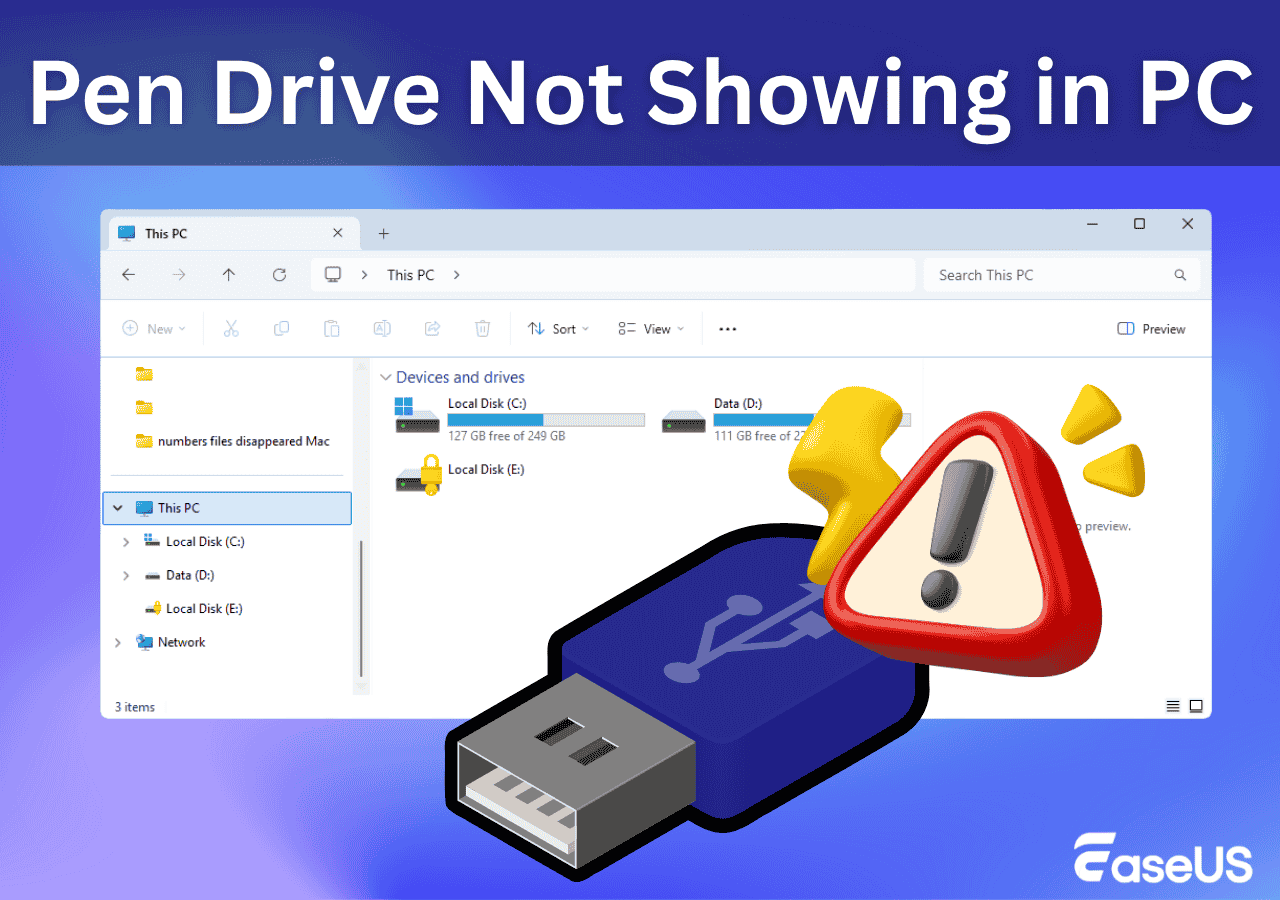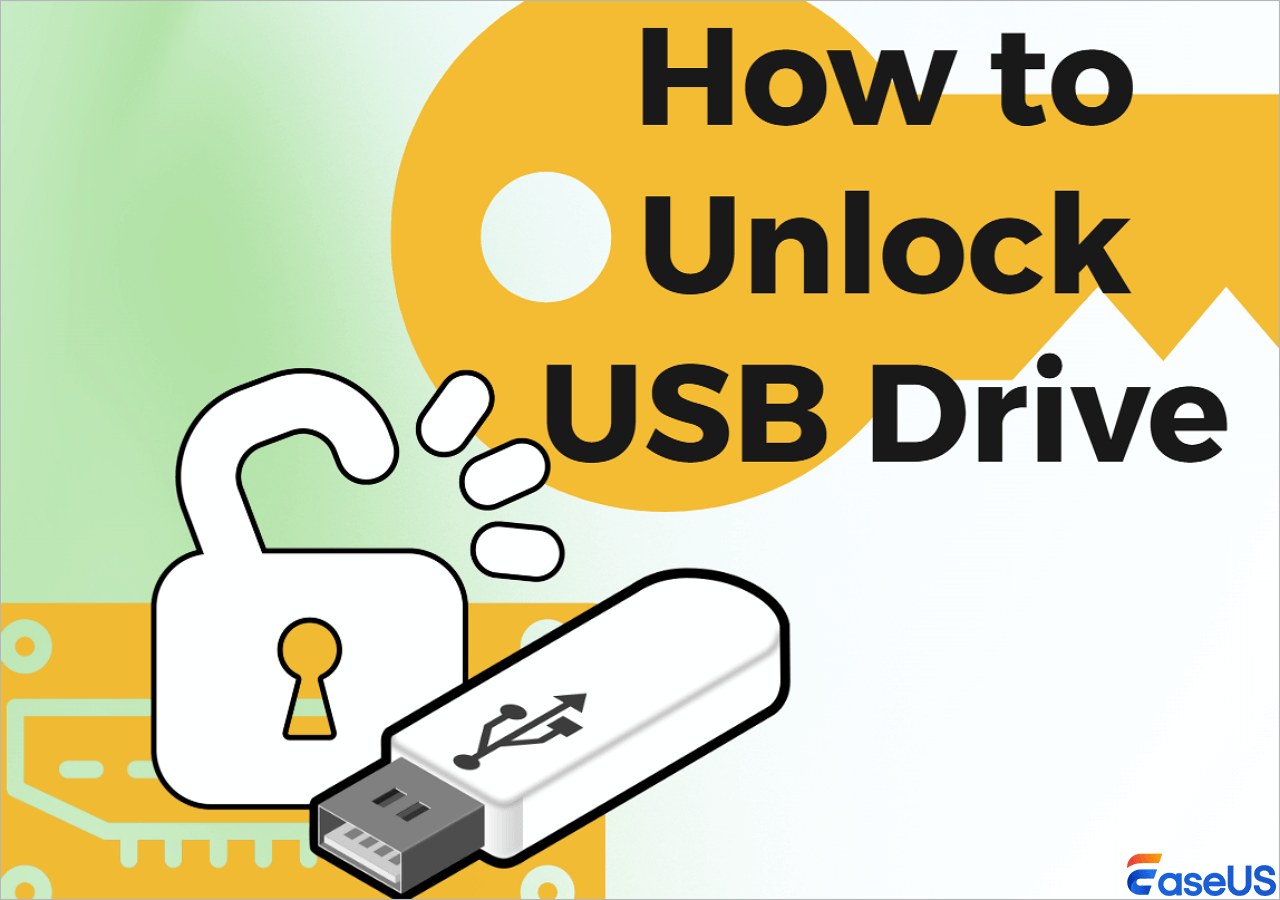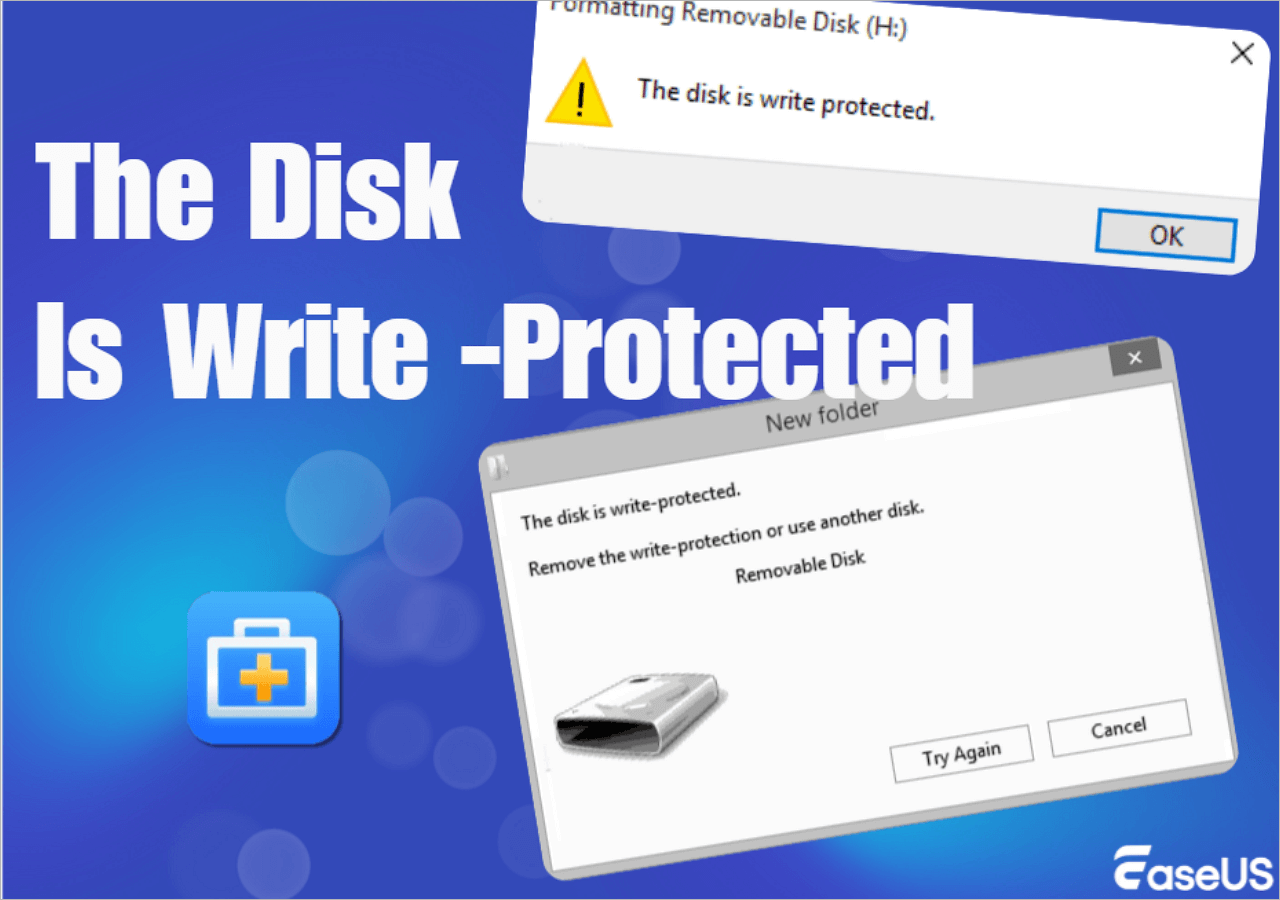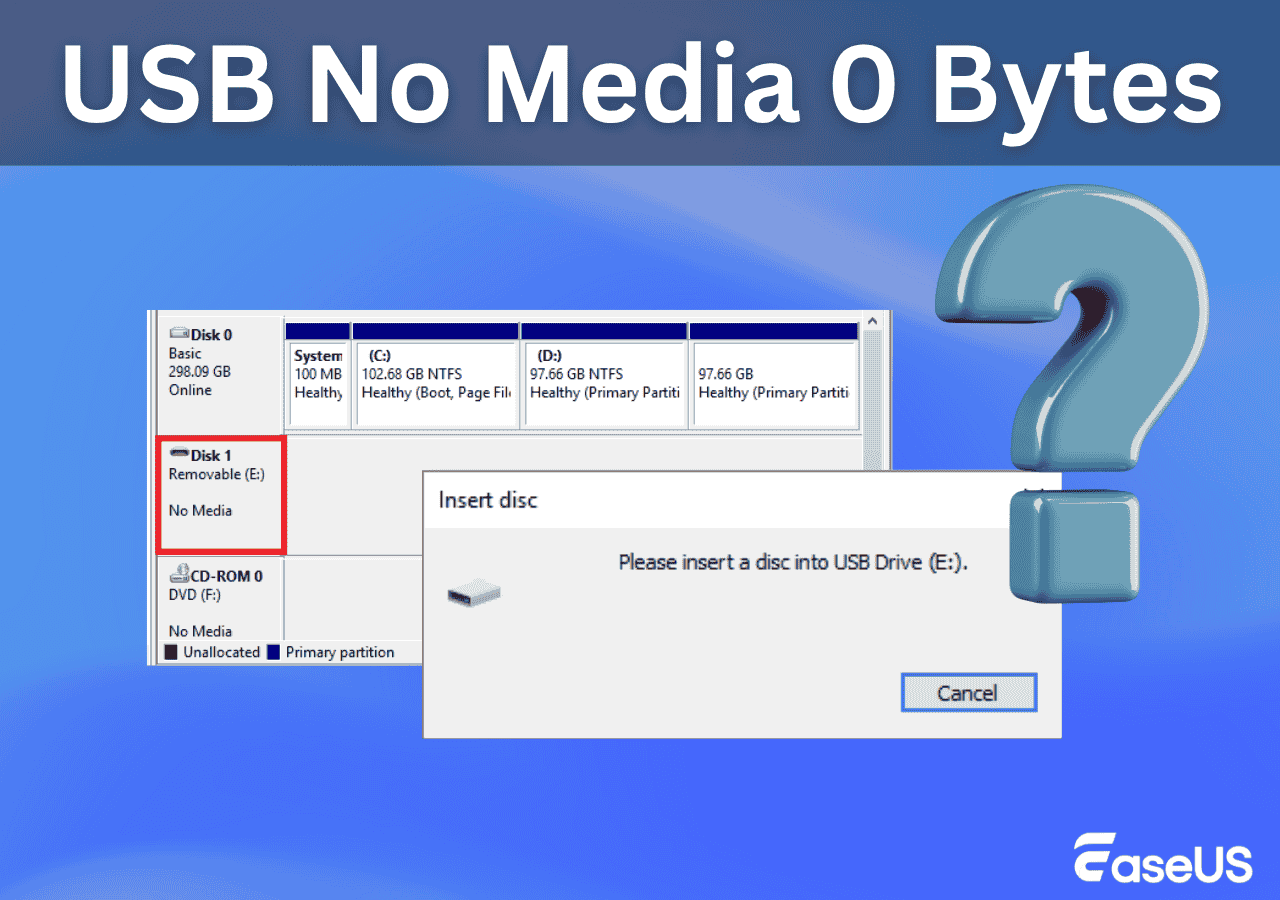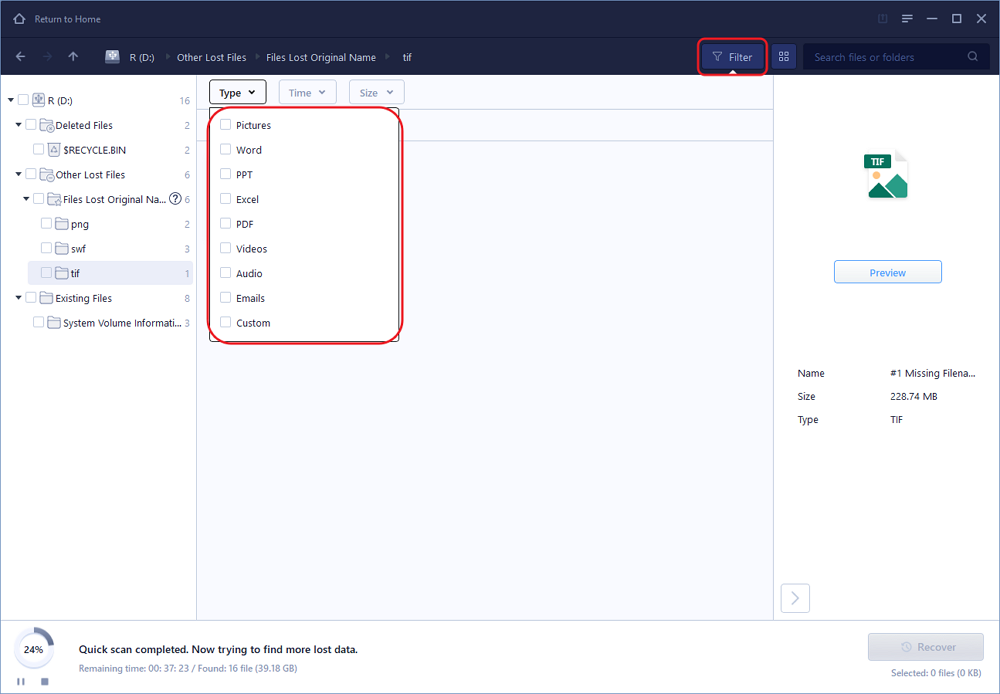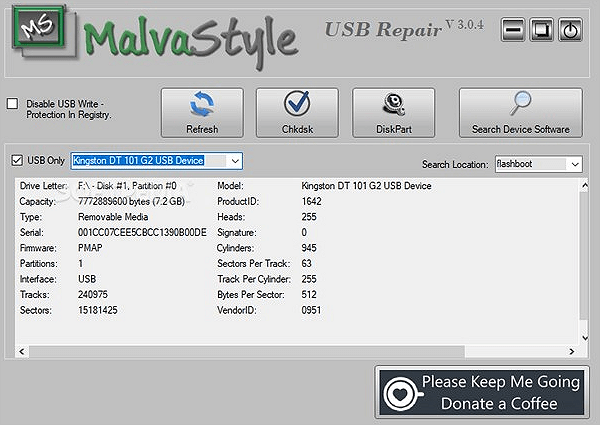-
![]() How to Fix a Pen Drive Without Formatting (Step-by-Step Guide)
How to Fix a Pen Drive Without Formatting (Step-by-Step Guide) December 28,2025
December 28,2025 6 min read
6 min read -
![]() Fix: Need to Format the Disk in Drive Before You Can Use It USB
Fix: Need to Format the Disk in Drive Before You Can Use It USB December 12,2025
December 12,2025 6 min read
6 min read -
![]()
-
![]() How to Unlock USB Drive, Decrypt It and Restore Lost Data
How to Unlock USB Drive, Decrypt It and Restore Lost Data January 07,2026
January 07,2026 6 min read
6 min read -
![]() The Disk Is Write Protected: How to Remove Write Protection HDD
The Disk Is Write Protected: How to Remove Write Protection HDD December 31,2025
December 31,2025 6 min read
6 min read -
![]()
-
![]()
-
![]() Open USB Drive that Cannot Open on Windows 10 and Access File
Open USB Drive that Cannot Open on Windows 10 and Access File December 12,2025
December 12,2025 6 min read
6 min read -
![]()
-
![]()
Page Table of Contents
This USB no media error is a sign that your computer can't read the drive's storage because of loose connection, driver issue, or corrupted file system, but frequently signals a failed flash memory chip or controller failure. To solve this error, you may need try another cable or run CHKDSK or Diskpart clean command.
PAGE CONTENT:
- Why 'USB No Media' Occurs in Disk Management
- Quick Fix 1. Change USB Port to Fix USB Drive No Media
- Fix 2. Restore Files from USB Showing No Media in Disk Management
- Fix 3. Find Entries of Disconnected USB Drive to Fix USB No Media
- Fix 4. Enable the USB Drive in the Device Manager to Fix USB No Media
Are you faced with the "USB no media" error in Disk Management on your computer? This guide will discuss why the "USB no media in disk management" error occurs and how to resolve related issues, allowing your storage devices to appear and function normally with your Windows computer again, without losing any data. Simply follow the methods outlined below to fix your problems.
Why 'USB No Media' Occurs in Disk Management
Do you know what the "No Media" error is? A USB "No Media" error occurs when your computer can't communicate with the drive, often due to a loose connection, corrupt drivers or file system, a failing drive, or insufficient power from the USB port. When a removable disk is defined as a no-media disk, Windows does not recognize it and most likely displays the "There is no disk in the drive" error in File Explorer. When you go to check the drive status in DiskPart, it says "USB no media 0 Bytes".
The same questions as your USB shows "no media" error when connected to a Windows PC happen to many people:
"I can not open the USB flash drive, and it says 'No Media' in Disk Management. Does anyone know how to resolve this issue?"
"Removable drive, my SanDisk USB pen drive, has a recognition problem in Windows 10 Disk Management. It's showing No Media, so the access is denied. I have tons of important photos in it, so please help me fix it."

To resolve the "USB showing no media" issue, try reconnecting the USB drive, using a different port, restarting your computer, and checking Device Manager for enabled or updated drivers. If the problem persists, you may need to use tools like CHKDSK or format the drive. However, formatting can erase your data, so restore it using USB drive data recovery software first.
Quick Fix 1. Change USB Port to Fix USB Drive No Media
When the USB flash drive shows no media in Disk Management, you can first try changing the USB port and reconnecting it to your PC from a different USB port.
Step 1. Unplug the USB from your computer properly.
Step 2. Reconnect the USB flash drive to your PC using a different USB port.
Step 3. Check if Disk Management detects your USB flash drive as a normal removable disk.
If the front USB ports did not solve the problem, it might be an insufficient power supply issue. Try to connect the USB drive to the rear USB port on the computer's motherboard, where the power supply is much higher.
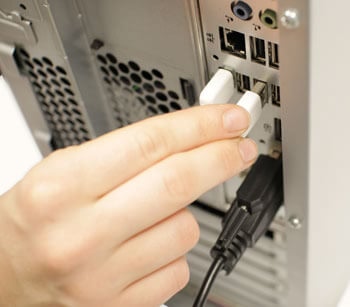
If the USB drive still indicates "no media" in Disk Management, follow the comprehensive fixes below to resolve your issue. Here's a video tutorial that can help you learn how to repair and recover data from USB drives.
- 00:48 Method 1. Repair USB with Error Check Tool
- 01:15 Method 2. Fix Corrupted USB with CMD
- 02:09 Method 3. Uninstall USB Driver to Fix USB Drive
- 02:40 Recover USB with EaseUS Data Recovery Wizard

Fix 2. Restore Files from USB Showing No Media in Disk Management
To thoroughly scan the USB flash drive and find all media files and data, we recommend using EaseUS free data recovery software. It specializes in restoring lost, hidden, or permanently deleted files from USB flash drives, external hard drives, SD cards, and other devices with a few clicks.
Even when the USB drive or any external hard drive is not showing files, though they still exist, EaseUS USB data recovery software helps locate all the lost data with ease. Follow the steps below:
Step 1. Run USB Data Recovery Software
Connect the USB drive or pen drive to your computer and launch EaseUS USB data recovery software on your PC. Select the drive which is labeled as a External drives, and click "Scan for lost data" to start looking for lost files.
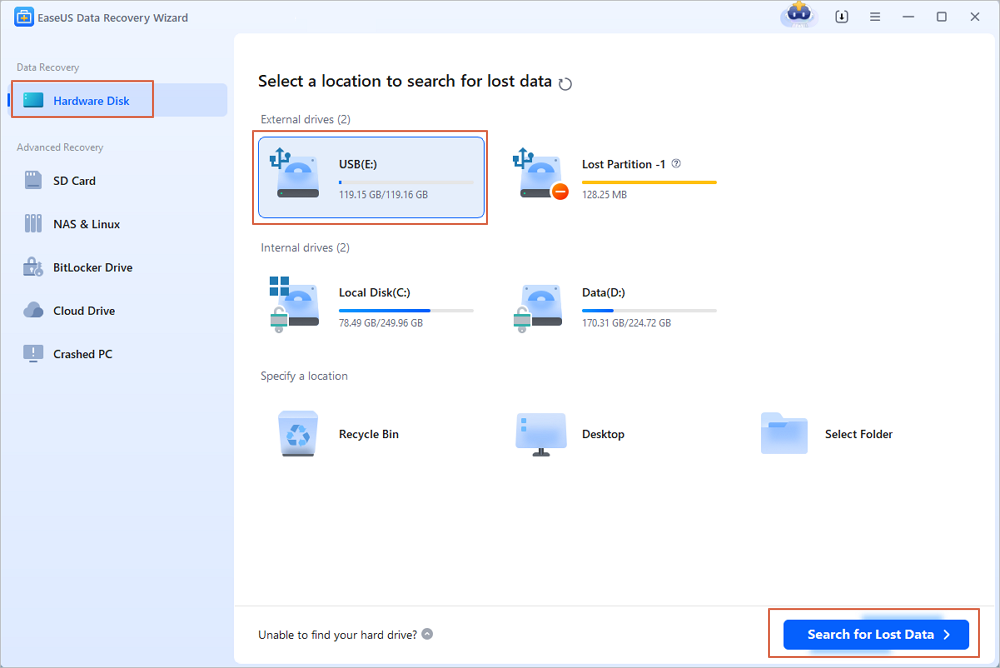
Step 2. Scan and Search Lost Files on a USB Drive
EaseUS Data Recovery Wizard will thoroughly scan your USB flash drive/pen drive and find all your lost data on it. When the scan process completes, use the Filter feature to find wanted files.
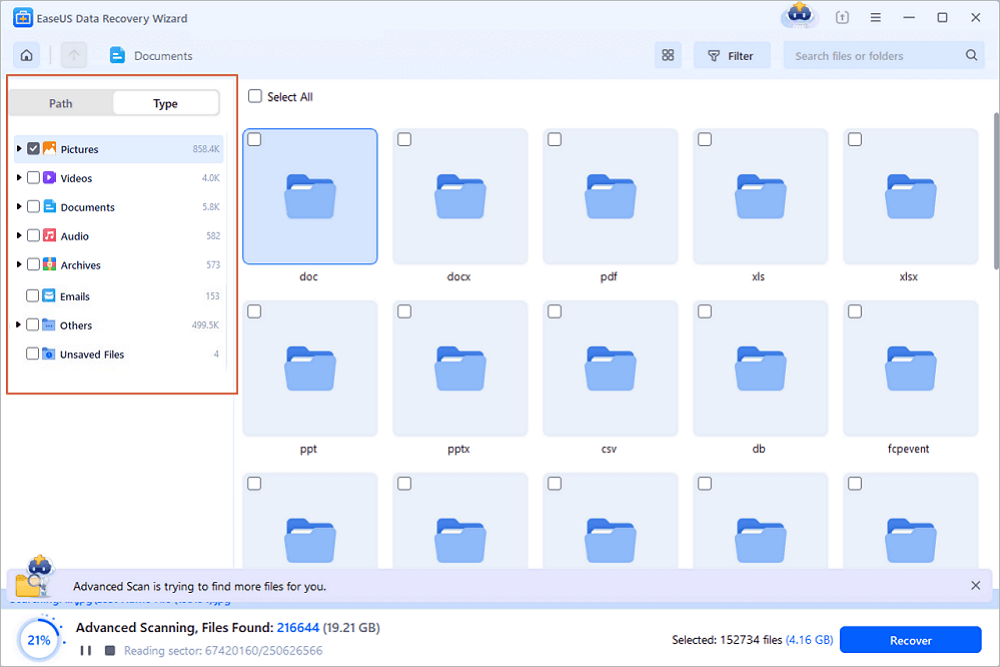
Step 3. Restore All Lost Files from USB
A double-click will allow you to preview the files. Select the target files to restore and click "Recover" to save them to a secure location on your PC or other external storage devices.
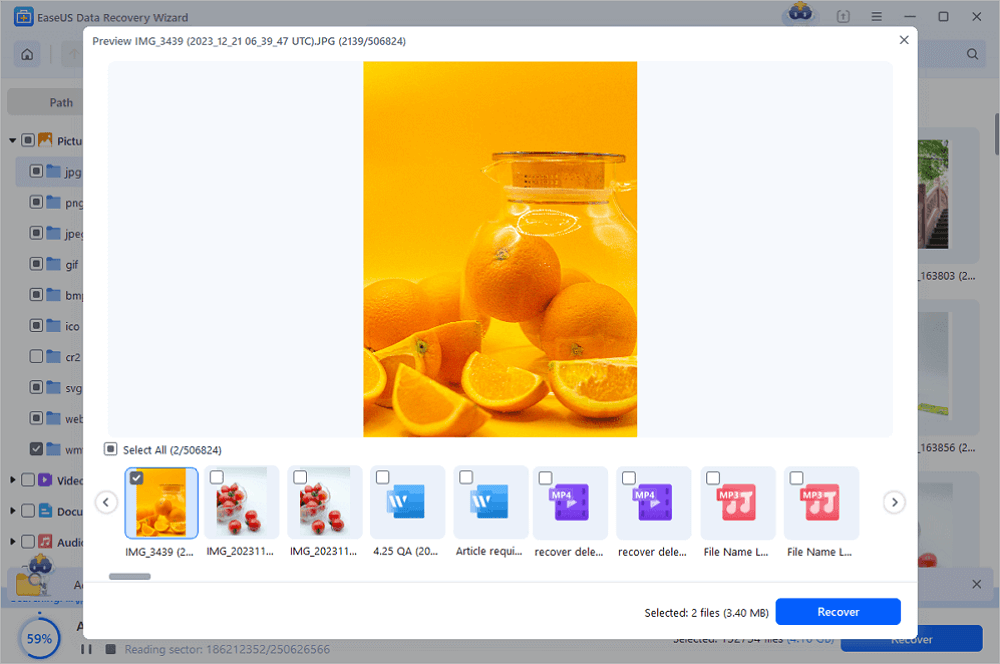
You Can Trust EaseUS Data Recovery Software
EaseUS Data Recovery Wizard has acquired an extensive technical base in data recovery and trusted by billions of users since 2005. Check out reviews on Trustpilot.
Share this post with your friends and help them learn how to fix the USB no media error in Windows Disk Management.
Fix 3. Find Entries of Disconnected USB Drive to Fix USB No Media
Part 1. Find entries of disconnected devices in the Device Manager
For Windows 10/8 users:
- Click Start and search device manager, select Device Manager from the search result.
- Click View and select Show Hidden Devices, expand all entries by double-clicking them.
- Locate the greyed out devices and right-click on them, select Uninstall.
- Restart your PC.
For Windows 7 users:
- Click Start and type: cmd, hit Enter.
- Type: set devmgr_show_nonpresent_devices=1 and hit Enter.
- Type: cd\ and hit Enter.
- Type: cd windows\system32 and hit Enter.
- Type: start devmgmt.msc and hit Enter.
- Click View and select Show hidden devices, expand all entries, and double-click on them.
- Locate all greyed-out entries, right-click on each one, and select Uninstall.
- Restart your PC.

Part 2. Reconnect the USB to the PC
After finding entries of all disconnected devices in Device Manager, restart your PC and try to reconnect the USB to your PC again. Check if the USB shows up in Disk Management. If not, follow the next solution.
Fix 4. Enable the USB Drive in the Device Manager to Fix USB No Media
Step 1. Right-click the Windows icon and select Device Manager.
Step 2. Locate your USB flash drive under Universal Serial Bus Controller with the name USB Mass Storage.
Step 3. If it's marked with a red mark or an arrow mark, right-click on it and select Enable.
Step 4. The drive has already been marked if you can't see the Enable option.
You can continue checking the Disk Drives in Device Manager to ensure that all drives are enabled. Install professional USB drive data recovery software on your PC to recover data from the USB drive that shows as 'No Media' in Disk Management.
Fix 5. Change the USB Drive Letter and Run CHKDSK
1. Change USB drive letter
- Right-click on Computer, select Manage, and enter Disk Management.
- Right-click the USB flash drive that shows no media, then select Change Drive Letter and Paths...
- Click Change and click Assign the following drive letter: to set a new drive letter to your USB flash drive, which says no media now on your PC.
- Click OK to confirm the operation.
2. Run CHKDSK to repair USB errors
- Right-click on the Windows icon and select Command Prompt (Admin).
- Click Yes if the system asks you to sign in as administrator. And sign in with your Administrator account.
- Type: chkdsk E: /f /r /x and hit Enter. (Replace E: with the drive letter of your USB flash drive.)
You can now check if the drive shows up as a regular storage device on your PC. Don't forget to share this post on SNS to help more people learn how to fix the "USB no media" error.
Fix 6. Turn to USB Drive Repair Services to Fix USB No Media
The most effective way to fix "USB shows no media in Disk Management" is to use a USB repair service. EaseUS provides data recovery services and disk repair tips. It can repair hard drives, USB drives, SD cards, and SSDs with experts. Contact the experts to fix your USB errors.
Consult with EaseUS data recovery experts for one-on-one manual recovery service. We could offer the following services after a FREE diagnosis
- Repair corrupted RAID structure, unbootable Windows OS, and corrupted virtual disk file
- Recover/repair lost partition and re-partitioned drive
- Unformat hard drive and repair RAW drive (Bitlocker encrypted drive)
- Fix disks that become GPT-protected partitions
Conclusion
In the above guide, we have listed the most effective troubleshooting methods for USB no media error in Disk Management, including connecting the flash drive to a new USB port, to the computer's motherboard USB port, uninstalling and reinstalling the drive in Device Manager, changing the drive letter, and repair USB errors. Many other things can cause a USB flash drive to malfunction, including physical damage.
If you tried all the troubleshooting methods on this page and your problem is still not resolved, consider reading our other tutorials to look for answers to your queries.
People Also Ask About USB No Media Error
If you have other concerns related to USB shows no media error, check out the questions and answers section below to find an answer to your concern.
1. Why does my USB say no media?
"No Media" means the flash memory controller cannot communicate with the NAND flash memory on the drive. Because of this, it appears to the computer as an empty disk drive. This is usually caused by the NAND flash failing.
A NAND USB2Disk showing "no media" indicates a communication failure between the USB drive's controller and its NAND flash memory, often due to physical damage, file system corruption, outdated drivers, or a faulty USB port.
This is why the USB appears as No Media on Disk Management.
2. How do I fix no media USB?
Here is a list of all possible ways to fix the No Media issue on your USB drive:
- Try your USB in another port
- Error-checking tool to fix USB no media
- Update Your media drivers
- Uninstall the device driver to fix there is no media in the device
- Change letter of your removable disk to fix no media error
- If you found format option on your Pendrive or memory card do it
- Using chkdsk to fix there is no media in the specified device
- Rebuilt MBR Partition using third party tool
- Using attrib command to fix no media USB
- Delete partition and create a new partition using disk management
For a step-by-step guide, we suggest you revert back to the Quick Fix and 4 Complete Fixes on this page and follow the tutorials there.
3. How do I open a flash drive that is not recognized?
Step 1. Connect the USB flash drive to the PC
Step 2. Navigate to "Control Panel" > "System" > "Device Manager" > "Disk drivers".
Step 3. Find and select your USB device, right-click and first choose "Uninstall" and then choose "Scan for hardware changes" to refresh the drivers.
Step 4. Restart your computer.
For more details, please refer to how to Fix USB Flash Drive Not Recognized or Detected.
Was this page helpful?
-
Finley is interested in reading and writing articles about technical knowledge. Her articles mainly focus on file repair and data recovery.…
-
Mahesh is an experienced computer tech writer. He's been writing tech how-to guides for about 8 years now and has covered many topics. He loves to teach people how they can get the most out of their devices.…

20+
Years of experience

160+
Countries and regions

72 Million+
Downloads

4.9 +
Trustpilot Score


Free Data
Recovery Software
Recover data up to 2GB for free!


